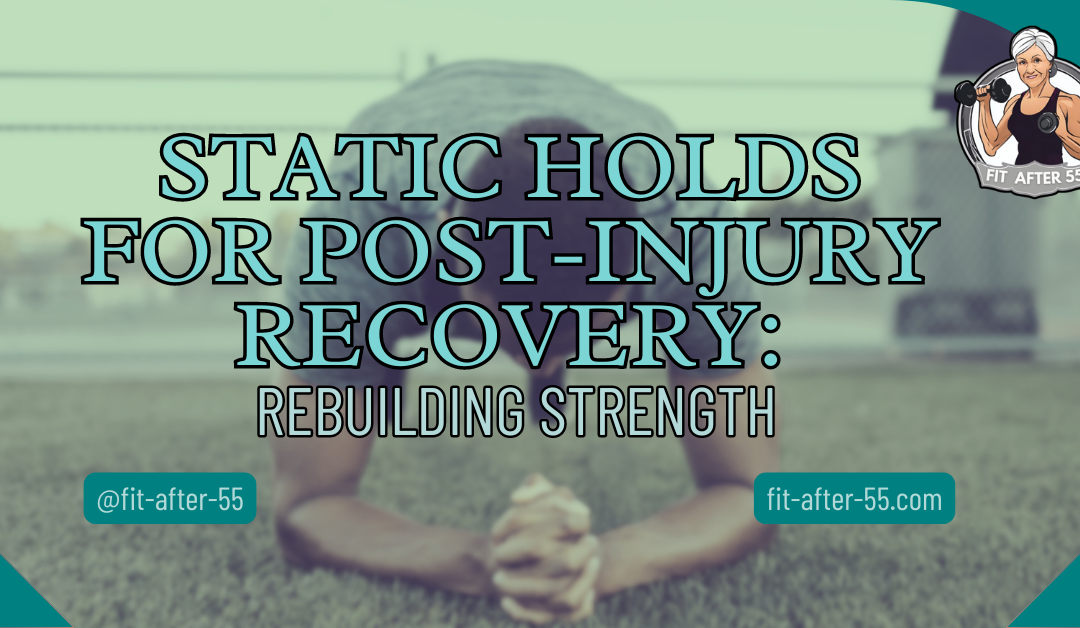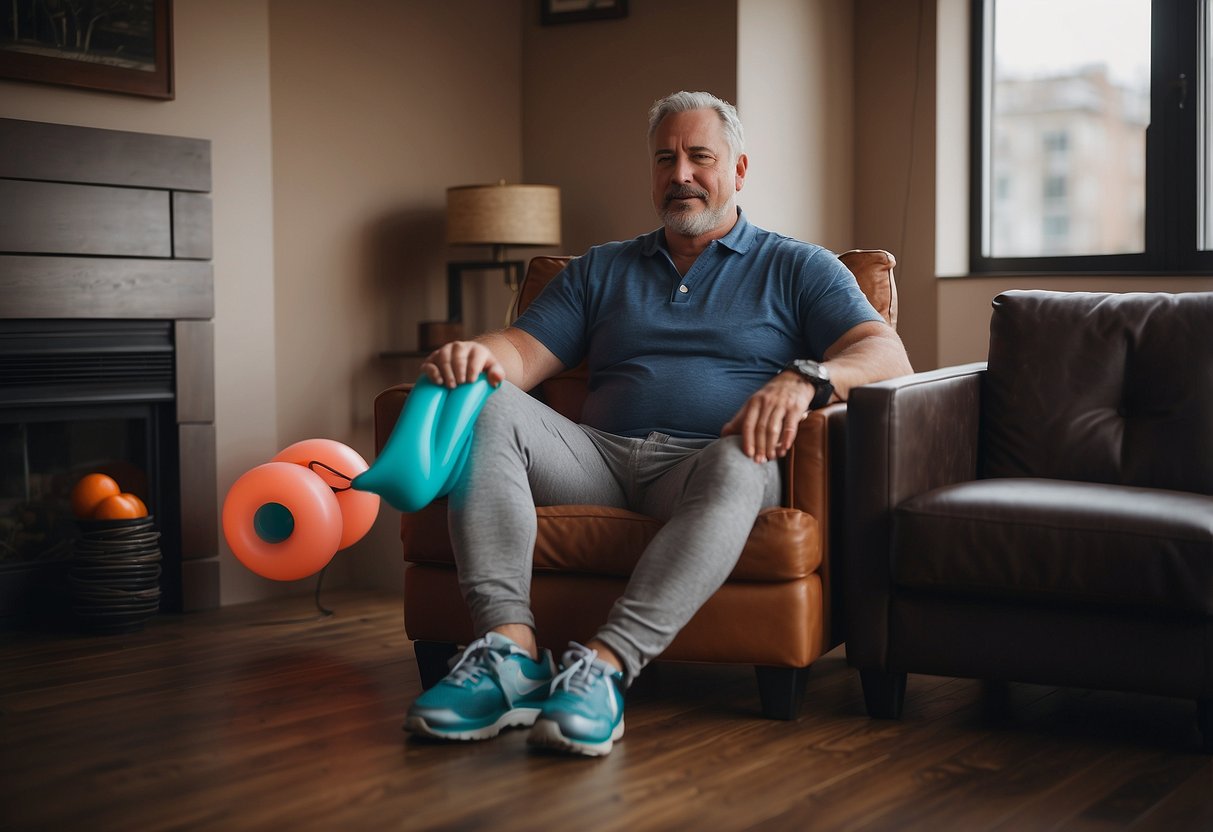Recovering from an injury can feel like a long road, but incorporating static holds into your routine might just be the game-changer you need! Static holds, or isometric exercises, involve holding a position without moving, allowing you to build strength without putting extra strain on your recovering muscles or joints. They’re perfect for gently easing back into fitness and rebuilding stability, especially when jumping into dynamic movements feels a bit too daunting. Whether you’re recovering from a minor tweak or something more serious, static holds offer a safe, controlled way to reconnect with your body, regain confidence, and steadily boost your strength. Ready to learn more about how to use these powerful exercises in your recovery journey? Let’s dive in!
Static Holds for Post-Injury Recovery: Rebuilding Strength and Stability
Static holds are a valuable tool in post-injury recovery. These exercises involve maintaining a fixed position for a set time, which can help rebuild strength and stability. Static holds can improve posture and reduce the risk of future injuries.
When recovering from an injury, it’s important to choose exercises that won’t cause further harm. Static holds are often a safe choice because they don’t involve movement that might aggravate the injured area. They can be used to target specific muscles without putting too much stress on the body.
Static holds come in many forms, from simple wall sits to more advanced poses like handstands. You can start with basic holds and work your way up as you get stronger. Remember to always consult with a doctor or physical therapist before starting any new exercise routine after an injury.
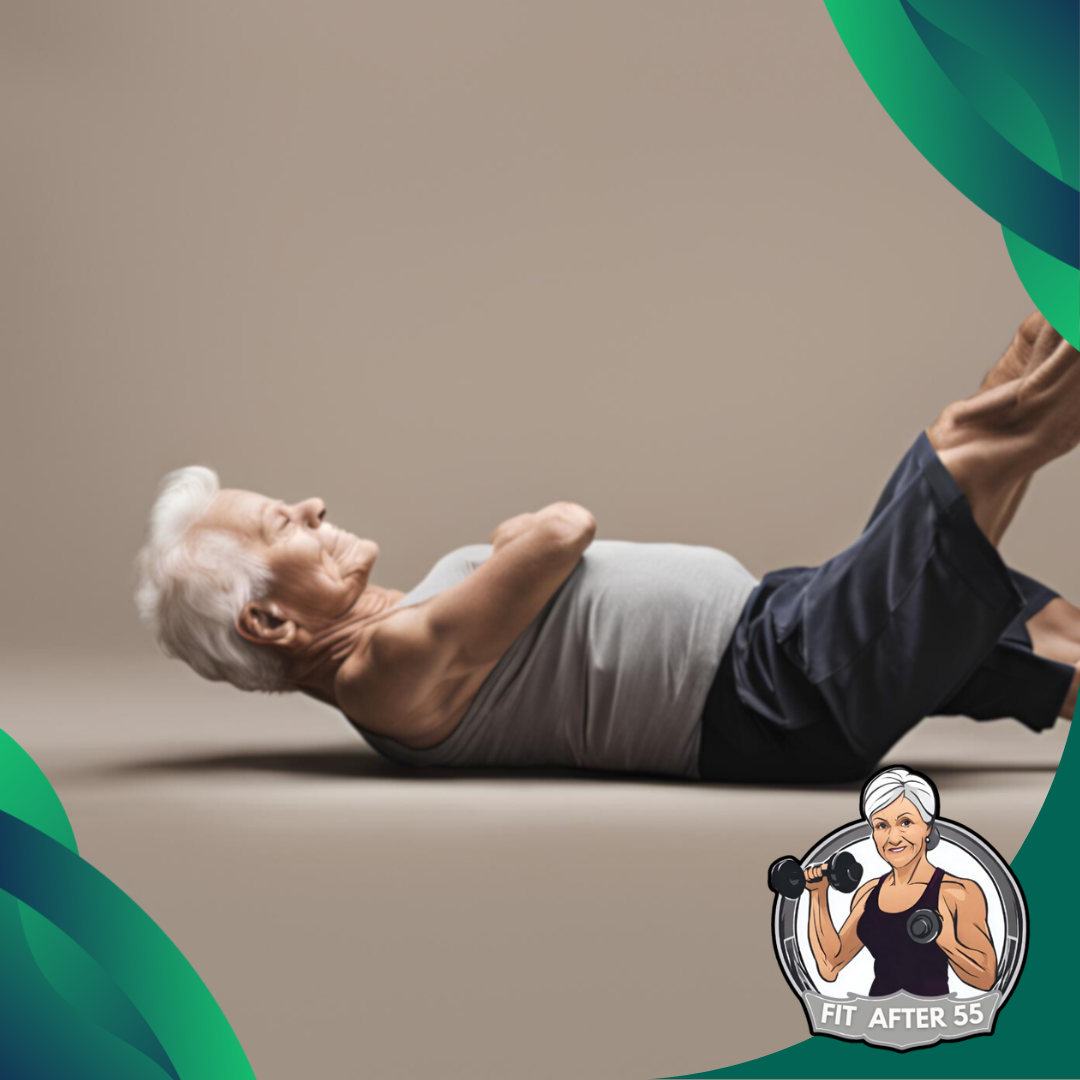
Understanding Static Holds
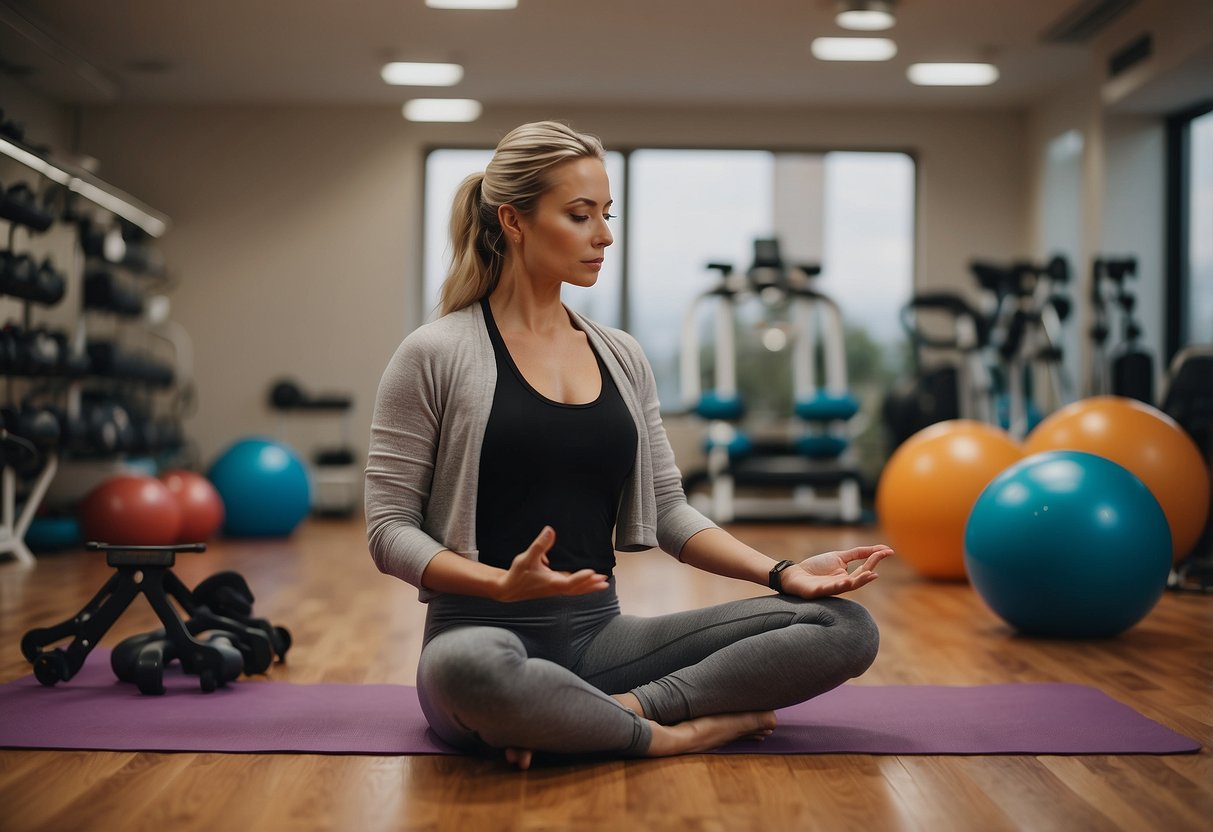
Static holds are exercises where you maintain a fixed position without moving. You keep your muscles tensed for a set time. This type of exercise can be very useful for post-injury recovery.
These holds work by keeping your muscles under constant tension. This helps build strength and endurance without putting too much stress on your joints. Some common static hold exercises include:
- Planks
- Wall sits
- Hollow holds
- Chin-up holds
You can do static holds with or without weights. They’re often safer than dynamic exercises, especially when you’re recovering from an injury. Static holds increase muscle tension without shortening or lengthening the muscle. This makes them great for maintaining strength during recovery. Your physical therapist might use static holds to help you regain strength after an injury. They can target specific muscle groups without risking further harm.
Remember to breathe normally during static holds. Start with short hold times and gradually increase as you get stronger. Always follow your doctor’s or therapist’s advice when using static holds for recovery.
The Role of Static Holds in Post-Injury Recovery

Static holds play a crucial part in helping your body heal after an injury. They can improve muscle control, stabilize joints, and reduce pain. These techniques are valuable tools in your recovery process.
Neuromuscular Reeducation
Static holds help retrain your muscles and nerves to work together properly. When you hold a position, your brain forms new connections with your muscles. This process is called neuromuscular reeducation.
You’ll start with simple holds and progress to more challenging ones. For example, you might begin by holding your arm out for 10 seconds. Later, you could hold a lightweight in the same position.
These exercises improve your:
- Muscle activation
- Coordination
- Body awareness
As you practice, your movements become smoother and more controlled. This leads to better function in daily activities and sports.
Joint Stabilization
Static holds can strengthen the muscles around your injured joint. This added strength helps keep the joint in proper alignment.
You’ll often use isometric exercises for this purpose. These involve contracting muscles without moving the joint. For instance, you might push against a wall with your hand while keeping your elbow bent.
Benefits of joint stabilization include:
- Reduced risk of re-injury
- Improved balance
- Better posture
As your stability improves, you can add more challenging exercises. This might include holding positions on unstable surfaces like balance boards.
Pain Management
Static holds can help manage pain during your recovery. They work by:
- Increasing blood flow to the injured area
- Releasing endorphins, your body’s natural pain relievers
- Reducing muscle tension
You’ll typically hold gentle stretches for 30 seconds to 2 minutes. This can decrease muscle soreness and improve your range of motion.
It’s important to stay within your pain-free range. If a hold causes sharp pain, stop and consult your healthcare provider. With consistent practice, you’ll likely notice a gradual decrease in discomfort and improved function.
Preparatory Measures for Static Holds
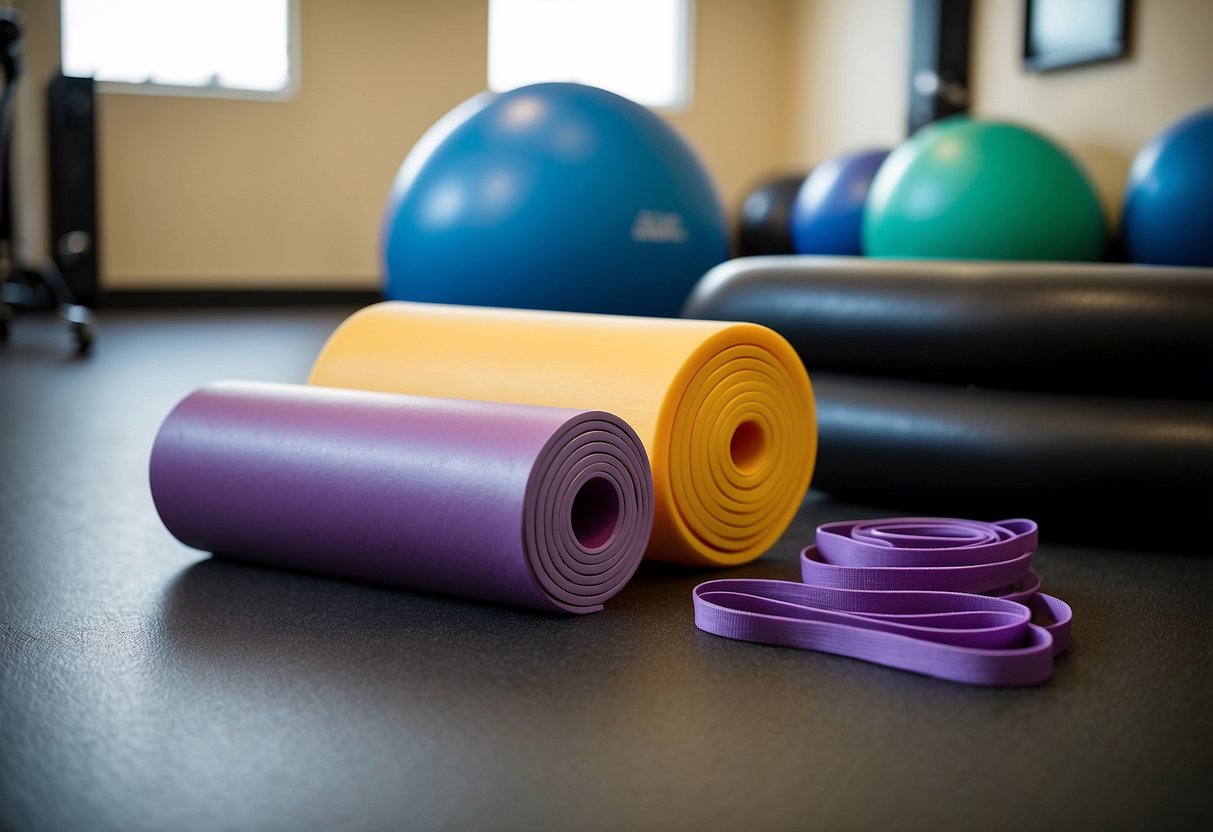
Before starting static holds for post-injury recovery, you need to take some key steps. These will help ensure your safety and maximize the benefits of the exercises.
First, consult your doctor or physical therapist. They can assess if you’re ready for static holds and provide guidance on which exercises are best for your specific injury. Warm up your muscles before beginning. This can include light cardio and gentle stretching. A proper warm-up reduces the risk of injury and prepares your body for the workout.
Choose the right equipment. You may need resistance bands, weights, or a sturdy wall or chair for support. Make sure all items are in good condition and appropriate for your strength level.
Set up a safe exercise space. Clear the area of any obstacles and ensure you have enough room to move comfortably. Good lighting and a non-slip surface are important for safety. Start with shorter hold times and gradually increase as you build strength. This approach helps prevent overexertion and allows your body to adapt.
Listen to your body during the exercises. If you feel pain beyond mild discomfort, stop immediately. Static holds should challenge you but not cause sharp or intense pain.

Upper Body Injuries
For shoulder injuries, try wall slides. Stand with your back against a wall and slowly slide your arms up. Hold the top position for 10-30 seconds. This helps prevent injury and builds shoulder strength.
Wrist injuries benefit from plank holds. Start on your hands and toes, keeping your body straight. Hold for 15-60 seconds. This strengthens your wrists gradually. For elbow issues, try isometric bicep curls. Hold a lightweight at a 90-degree angle. Maintain this position for 20-30 seconds to build elbow stability.
Lower Body Injuries
Wall sits are great for knee rehab. Lean against a wall, sliding down until your thighs are parallel to the ground. Hold for 30-60 seconds. This builds strength post-injury without impact.
For ankle injuries, try calf raises. Rise onto your toes, then hold the top position for 15-30 seconds. This improves ankle stability and strength. Single-leg stands help with hip issues. Balance on one leg for 30 seconds. This builds hip strength and improves balance.
Core and Back Injuries
Planks are excellent for core and back rehab. Start on your forearms and toes, keeping your body straight. Hold for 15-60 seconds. This builds core strength without straining your back. Bird dog holds target both core and back. Start on hands and knees. Extend opposite arm and leg, holding for 15-30 seconds. This improves spine stability.
For lower back issues, try supine holds. Lie on your back, knees bent. Lift your hips slightly off the ground and hold for 20-30 seconds. This strengthens your lower back muscles gently.
Executing Static Holds Safely
When doing static holds after an injury, safety is key. Always start with your doctor’s approval. Begin slowly and gently to avoid further harm. Choose a stable position you can hold without pain. This might be standing, sitting, or lying down. Pick a level that challenges you but doesn’t cause discomfort.
Time your holds carefully. Start with short durations, like 5-10 seconds. As you get stronger, you can hold longer. Don’t push past 30-60 seconds at first. Remember to breathe normally during the hold. Holding your breath can raise blood pressure and cause dizziness.
Pay attention to your form. Proper alignment is crucial for safety and effectiveness. Ask a trainer or physical therapist to check your technique. Listen to your body. If you feel pain, stop immediately. A little muscle burn is okay, but sharp pain is not.
Rest between holds is important. Give your muscles time to recover before the next set. Progress slowly. Increase hold times or difficulty only when you can do current exercises easily and pain-free. Always warm up before static holds. A few minutes of light movement can prepare your muscles and reduce injury risk.

Duration and Frequency of Static Holds
When using static holds for post-injury recovery, you need to be careful with the duration and frequency of your exercises. Start with short holds of 10-15 seconds and gradually increase as you get stronger.
For beginners, aim for 2-3 sets of static holds per exercise. As you progress, you can increase to 3-4 sets. Remember to listen to your body and avoid overexertion. Frequency-wise, start with 2-3 sessions per week. This gives your muscles time to recover between workouts.
Always warm up before your static hold exercises. This helps prepare your muscles and reduces the risk of further injury. Timed static contractions can be an effective way to measure your progress. If you can hold a position for the full prescribed time, it’s a sign you’re ready to increase the difficulty.
Remember, consistency is key. Regular practice of static holds can help improve your strength and stability during recovery.
Setting Recovery Milestones
Start by setting small, achievable goals for your static hold exercises. These milestones will help you stay motivated and track your progress. Begin with short hold times, like 10-15 seconds. As you get stronger, aim to increase hold times by 5-10 seconds each week.
Keep a log of your exercises, hold times, and any pain or discomfort. This will help you spot trends and improvements. Set both short-term and long-term goals. A short-term goal might be holding a plank for 30 seconds. A long-term goal could be returning to your pre-injury workout routine.
Celebrate your wins, no matter how small. Each milestone you reach is a step towards full recovery.
Adjusting Intensity and Duration
Listen to your body as you recover. If you feel pain during a hold, stop immediately. Muscle soreness is normal, but sharp pain isn’t. Start with 2-3 static hold sessions per week. As you get stronger, you can slowly increase to 4-5 sessions.
Gradually increase the difficulty of your holds. For example, move from wall sits to single-leg wall sits as you improve. If you have a setback, don’t get discouraged. Reduce the intensity or duration of your holds and build back up slowly.
Always warm up before your static hold exercises. This helps prevent further injury and improves your performance.
Dynamic Exercises
Dynamic exercises involve movement and can improve your strength and flexibility. You might try gentle stretches or controlled movements of the injured area. These exercises can help reduce stiffness and pain after an injury.
Start with small, easy motions and slowly increase the range. You could do arm circles, leg swings, or ankle rotations. Always listen to your body and stop if you feel pain.
As you heal, add more complex exercises. Try squats, lunges, or push-ups. These build overall strength and support the injured area. Remember to start slow and use good form.
Assistive Devices
Assistive devices can help you move safely and support healing. Crutches, canes, or walkers take weight off injured legs. Braces or splints keep joints stable and prevent further harm.
For hand or arm injuries, you might use special utensils or tools. These make daily tasks easier while you recover. Grip aids can help you hold objects if your hand strength is low.
Some devices, like resistance bands, help with exercises. They let you work muscles gently and build strength over time. Ask your doctor or therapist which devices might help you most.
Challenges in Post-Injury Rehabilitation

Recovering from an injury can be a difficult journey. You may face several hurdles during your rehabilitation process. Pain management is often a major challenge. Dealing with discomfort while trying to regain function can be frustrating and demotivating.
Limited mobility can also pose problems. You might struggle with everyday tasks that were once simple, leading to feelings of dependence and frustration. Psychological factors can significantly impact your recovery. Depression, anxiety, and stress are common after an injury and may slow down your progress.
Maintaining motivation throughout the rehabilitation process can be tough. The slow pace of recovery might make you feel discouraged at times. Adhering to your treatment plan can be challenging. You may find it hard to consistently perform exercises or attend therapy sessions.
Here are some common challenges you might encounter:
- Chronic pain
- Muscle weakness
- Loss of flexibility
- Fear of re-injury
- Sleep disturbances
- Financial stress from medical bills
Remember, each person’s recovery journey is unique. You may face some or all of these challenges, but with proper support and perseverance, you can overcome them.
When to Advance from Static Holds

Static holds can be a great starting point for recovery after an injury. But it’s important to know when to move on to more dynamic exercises.
- You should consider advancing from static holds when:
- You can hold the position for 30-60 seconds without pain
- Your muscles no longer fatigue quickly during holds
- You feel stable and in control during the exercise
Pay attention to how your body feels. If you’re able to maintain strength during holds without discomfort, it may be time to progress. Talk to your doctor or physical therapist before making changes. They can assess your progress and give personalized advice.
When ready to advance, start slowly. Try adding small movements to your static holds. For example, if you’ve been doing wall sits, try adding a slight up-and-down motion. Calisthenics progressions can be a good next step. These bodyweight exercises allow you to gradually increase difficulty.
Remember, everyone’s recovery is different. Don’t rush the process. Listen to your body and medical professionals to ensure a safe return to full activity.
Fun Fact
Did you know that static holds are about more than just building strength? They’re also fantastic for enhancing stability and balance—two crucial elements often compromised after an injury. By focusing on these exercises, you can improve your overall body control, reduce the risk of re-injury, and boost functional movement, helping you feel more confident and steady as you recover.
Static Holds for Injury Recovery: Regain Strength and Stability
Static holds are a fantastic addition to any post-injury recovery plan, helping you rebuild strength, improve stability, and boost confidence without overdoing it. Remember, recovery is all about patience, consistency, and listening to your body. So, start incorporating a few static holds into your routine, even if it’s just a few seconds at a time—you’ll be surprised at the difference it can make! Ready to give it a try? Find a comfortable spot, pick a static hold that suits your needs, and feel the benefits for yourself. Your body will thank you!
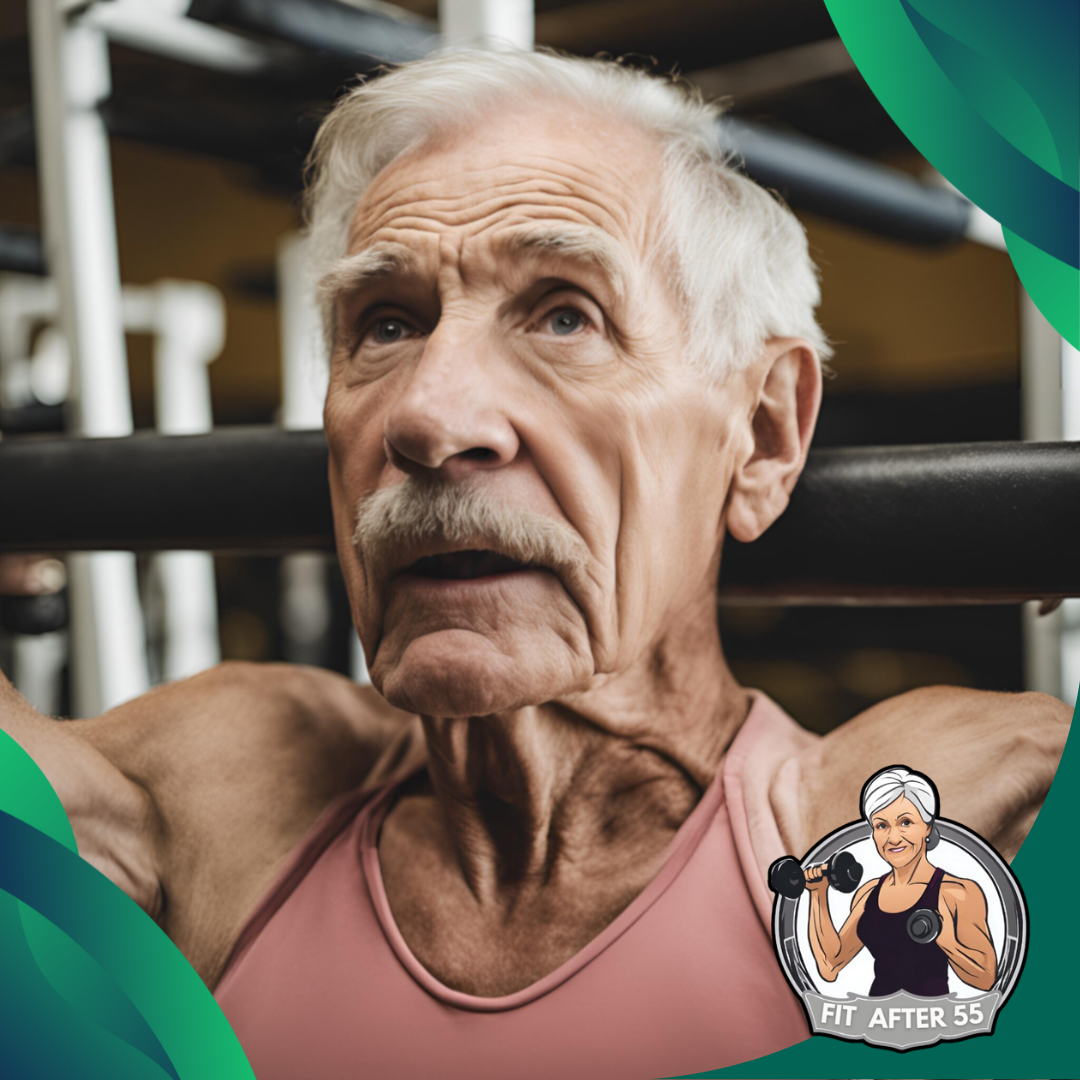
How long should static holds be performed to aid injury recovery?
Which static hold exercises are recommended for post-injury rehabilitation?
What are the benefits of incorporating static holds into a post-injury workout regimen?
Is it safe to engage in static stretching after a workout for injury recovery?
How do static holds contribute to increasing flexibility during the recovery process?
Why might static stretching be advised against before running or a workout?
Get Moving, Feel Good!
Seeking fitness inspiration? Check out our Facebook filled with tips, tricks, and workout routines designed for those 55 and older. Join our lively community and explore ways to stay active, healthy, and joyful. Let’s get fit together!

